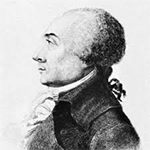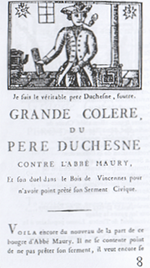The Revolutionary Jacques Hébert
Jacques Hébert was one of the leaders of the French Revolution. A radical writer who could command a large audience to take political action, he met his demise at the hands of the political opponents that he vigorously attacked. He was born on Nov. 15, 1757, in Alençcon, Normandy. His father had been a judge and wanted his son to become a lawyer. Young Jacques, however, wanted to be a writer and so moved to Paris and survived by writing plays and, importantly to his future, pamphlets. 
Hébert embraced the radical causes that were sweeping the nation in the late 18th Century, regularly singling out members of the nobility and King Louis XVI for continuing their free-spending ways even as poor people starved in the streets. In 1790, Hébert started the newspaper Le Pere Duchesne, named after a pen name that he had taken. He found wide readership among the sans-culottes, the members of the Third Estate who provided much of the muscle behind the French Revolution. 
In 1791, Hébert joined the Cordeliers Club, one of France's many well-known political clubs, whose members gathered to discuss ways to change French society. He also joined the Paris Commune, the city's municipal body, in 1792. There, he helped plan the August 10 insurrection that overthrew the monarchy. He was also instrumental in the radicals' anti-Christian efforts, converting Notre-Dame Cathedral into a Temple of Reason and playing a part in the conversion of many other Christian churches to the Cult of Supreme Reason. Hébert became famous and turned his venom on an ever wider group of targets. He railed against the Girondins, one of the most famous and powerful groups of the larger Jacobin Club, resulting in a widespread condemnation of them and their policies and a large number of arrests of their members. Hébert also stirred a large number of sans-culottes to storm the National Convention in September 1793 and convince lawmakers to freeze food prices. Like so many other revolutionaries at this time in this country, Hébert picked one enemy too many. He attacked Georges Danton, one of the most well-known of the radicals, and then the all-powerful Maximilien Robespierre. For once, the sans-culottes did not support him. The Committee of Public Safety ordered Hébert and many of his followers arrested in March 1794. By this time, the Revolutionary Tribunal was more of a rubber stamp of the directives of the Committee; Hébert and his followers went to the guillotine, on March 24.
|
|
Social Studies for Kids
copyright 2002–2026
David White




